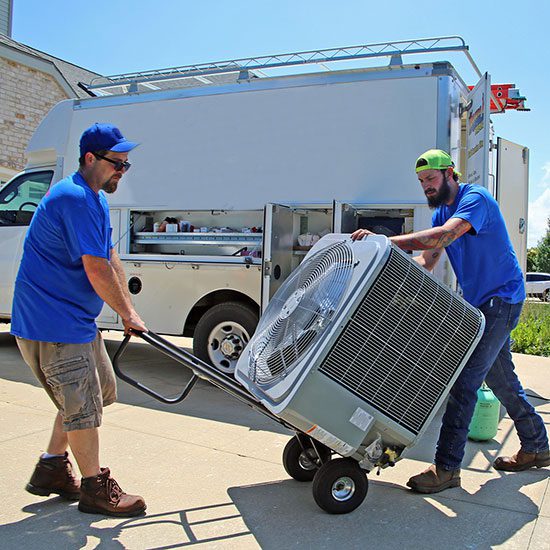
The last thing a homeowner wants is for their air conditioner to break down during the summer. The hot and humid summer weather can make it uncomfortable and even unhealthy when you’re air conditioning isn’t performing at its best. However, as temperatures rise during the hot summer months in Central Florida, so too do calls to air conditioning technicians. To make sure your home remains cool and comfortable, here are five signs that it’s time to replace your air conditioner.
It is more than ten years old.

If your air conditioner is more than ten to 15 years old, it’s time to replace it. In 2005, the U.S. Department of Energy updated its energy efficiency standards requiring air conditioning units to have a minimum 13 SEER or 14 SEER rating, depending on the geographic location. Previously, air conditioners were required to have a 10 SEER rating. Older air conditioning units sold in the late ’80s and early ’90s generally have a 7 SEER rating or less, making them even less efficient. The SEER or Seasonal Energy Efficiency Ratio measures the energy efficiency of air conditioners. Air Conditioners with higher SEER ratings are more energy-efficient than units with a lower SEER rating. For example, replacing a 2-ton, 10 SEER unit with a new 16 SEER air conditioner will save nearly 40% in heating and cooling costs.
It uses Freon (R-22) refrigerant.
Air conditioners that use Freon (R22) need to be replaced with a new air conditioner that uses a different type of refrigerant, such as R-454B with a lower global warming potential (GWP). In 2010, the U.S. Government began phasing out Freon (R-22) refrigerant to reduce the discharge of hydrofluorocarbons or HFCs in the environment. Since the importation and production of R22 refrigerant are prohibited, air conditioners installed before 2010 that use Freon will need to be replaced. Homeowners that are continuing to maintain older air conditioning units will soon reach a point when Freon is no longer available. Due to different flow rates and other factors, you can’t simply change to a different refrigerant type without replacing the air conditioner unit.
Frequent breakdowns and service calls
 Frequent breakdowns and service calls are another sign that it’s time to replace your air conditioner. Older air conditioning systems will require more maintenance and repairs to replace worn-out parts. However, depending on the age of the system, it may be less costly to replace the air conditioner than to continue maintaining an outdated unit. A simple formula called the 5000-rule, which represents the average cost of a new unit, can help determine if it is more cost-effective to repair or replace your air conditioner. Multiply the repair cost by the system’s age, and if the result is $5,000 or more, it’s time to replace the air conditioner. For example, if it will cost $650 to repair a 9-year old model air conditioner, it is more cost-effective to replace the system ($650 x 12 = $5,850).
Frequent breakdowns and service calls are another sign that it’s time to replace your air conditioner. Older air conditioning systems will require more maintenance and repairs to replace worn-out parts. However, depending on the age of the system, it may be less costly to replace the air conditioner than to continue maintaining an outdated unit. A simple formula called the 5000-rule, which represents the average cost of a new unit, can help determine if it is more cost-effective to repair or replace your air conditioner. Multiply the repair cost by the system’s age, and if the result is $5,000 or more, it’s time to replace the air conditioner. For example, if it will cost $650 to repair a 9-year old model air conditioner, it is more cost-effective to replace the system ($650 x 12 = $5,850).
Your utility bills have increased significantly.
Although seasonal fluctuations in your electric bills are expected, sharp increases in utility costs can indicate your air conditioner is operating less efficiently. As the air conditioner nears its end of life, the compressor may no longer function efficiently. You may also notice the air conditioning cycling more frequently to maintain the desired temperature, which drives up utility bills. Inefficient cooling also causes cold and hot spots in the home. Replacing your older Air Conditioning with a newer, more energy-efficient ductless, packaged, or split central air conditioner system will lower utility bills and save money on repairs.
continue reading
Related Posts
The Art of Preserving and Modernizing Historical Home HVAC Systems […]
Reducing Heat Loss and Lowering Energy Bills Some might not […]
The equipment that comes with your pool, the swimming pool […]



